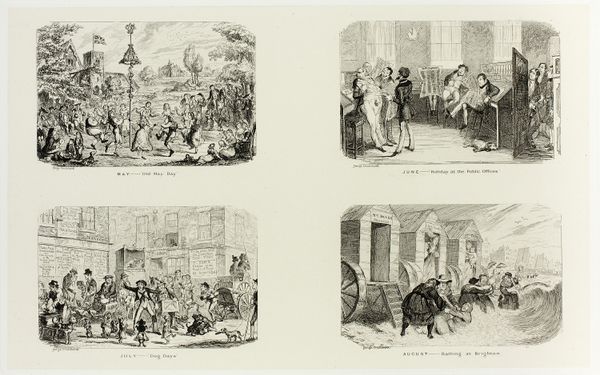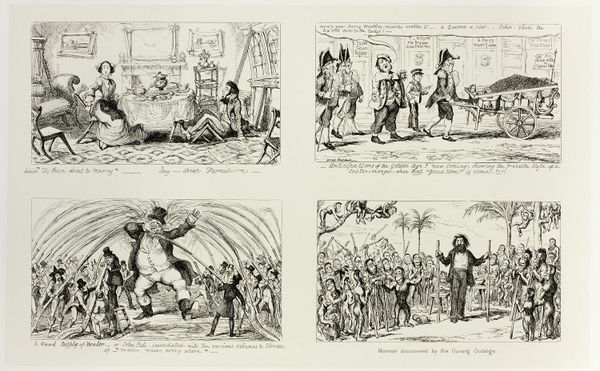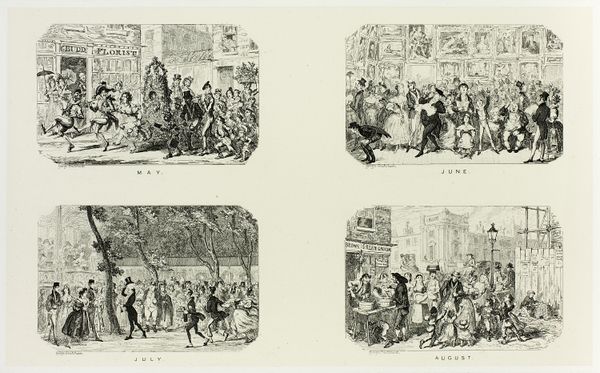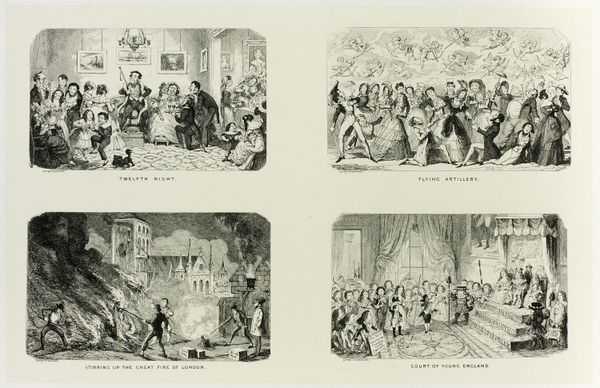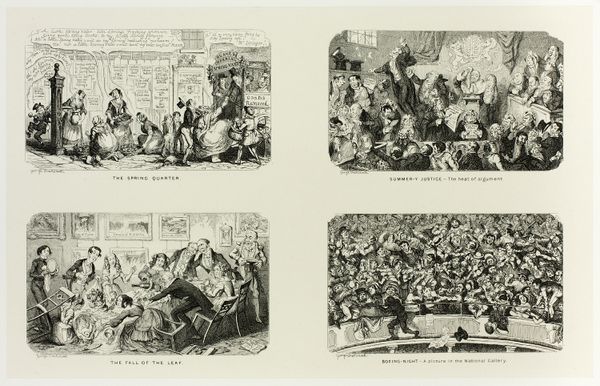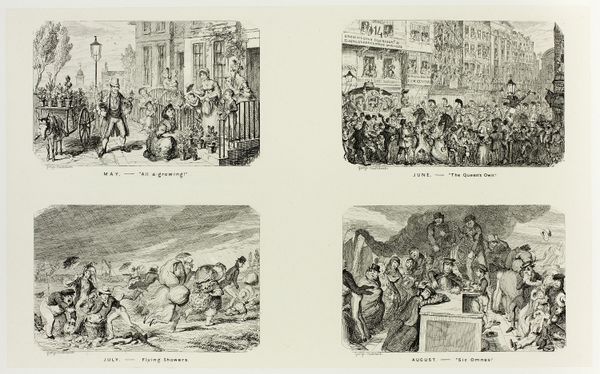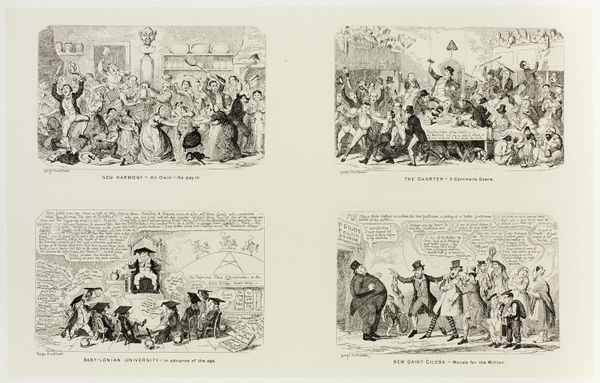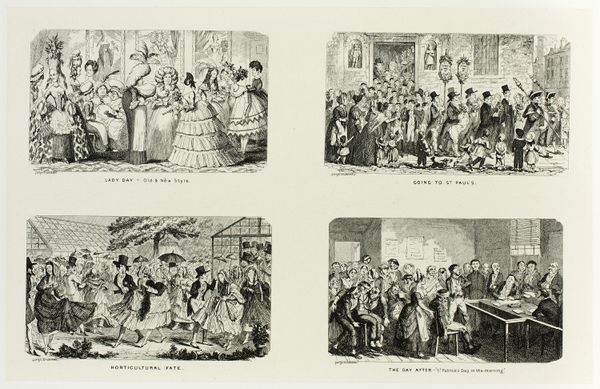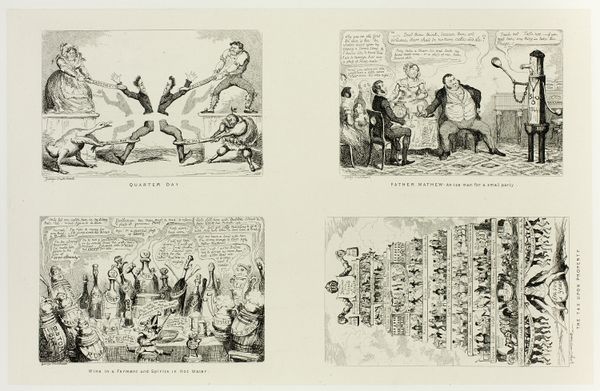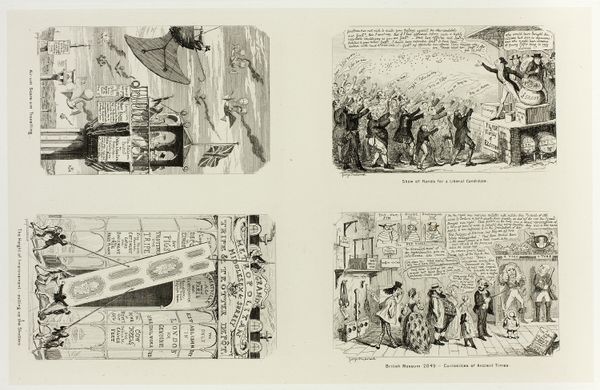
What It Must Come To, At Last, if the Ladies Go On Blowing Themselves Out as They Do! from George Cruikshank's Steel Etchings to The Comic Almanacks: 1835-1853 (top left) c. 1850 - 1880
0:00
0:00
Dimensions: 209 × 334 mm (primary support); 344 × 506 mm (secondary support)
Copyright: Public Domain
Curator: This etching by George Cruikshank, “What It Must Come To, At Last, if the Ladies Go On Blowing Themselves Out as They Do!,” from around the mid-19th century, uses a variety of methods in its printmaking. This reveals much about not just the social commentary within the image, but about Cruikshank's studio and his economic motivations. Editor: The image has such an interesting compilation of little scenes all speaking to the society of the time. In the first scene it pictures woman as hot air balloons that have escaped to sea... Can you tell me more about your Materialist approach and what jumps out at you when looking at this work? Curator: Well, a materialist lens would shift our focus to the means of production. Etchings like this were made with the aim of widespread production in newspapers and almanacs for quick consumption, not art collectors. These images lampoon the leisure class and its affectations but consider who made and consumed them. Editor: That's fascinating! It completely reframes how I initially saw it – it isn’t necessarily about high art, but more about getting these political jabs out there quickly. What part did the availability of these kinds of etching materials play on artistic expression during this era? Curator: Mass production relies on readily available materials, a market hungry for images, and the labour of skilled workers to etch plates quickly. Romanticism and social commentary are thus not separate from, but tied to, economic drivers. The paper quality, the speed of the lines – it all points to a capitalist system churning out critique. Editor: So it's like Cruikshank is using the tools of the very society he’s criticizing? Curator: Exactly! That tension makes the work richer and shows us how art, even satirical art, is deeply embedded in material conditions. I think considering print media beyond aesthetic evaluation sheds light on these socio-economic relationships. Editor: It definitely changed my perspective. Looking closely at the craft alongside the content is essential. Curator: It's essential for understanding its impact and cultural context, yes.
Comments
No comments
Be the first to comment and join the conversation on the ultimate creative platform.
